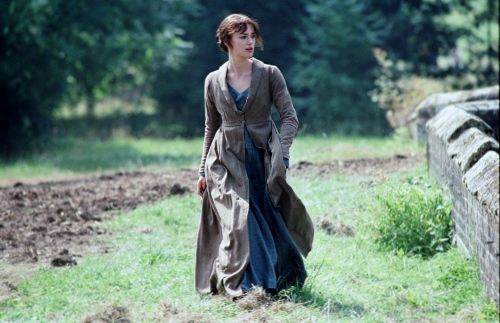Mary Wollstonecraft’s “A Vindication of the Rights of Woman” (1795)
discusses the role of the average middle class white woman in the 19th
century. She argues that this group of
women are shallow, vain, and petty. They
seem to exist only to look nice and to entertain men. She writes that women should be educated so that
they will be able to make better wives and mothers. Jane Austen seems to be advocating for something
similar in her novel Pride and Prejudice (1813). This
book was written a few decades after “A Vindication of the Rights of Woman.” It features a protagonist named Elizabeth Bennet
who is a middle class white woman.
 Elizabeth enjoys improving her body as well as her
mind. Wollstonecraft writes that women
would not be so childish “if girls were allowed to take sufficient exercise,
and not confined in close rooms till their muscles are relaxed, and their
powers of digestion destroyed” (Wollstonecraft 234). Girls would be much better and stronger women
if they were allowed to improve their bodies the way boys could. In Pride and Prejudice, Elizabeth walks to a
friend’s house in order to see her sick sister.
Elizabeth enjoys the exercise, but the other women she encounters look
down on her for this (Movie depictions of this scene can be found here and here).
Elizabeth enjoys improving her body as well as her
mind. Wollstonecraft writes that women
would not be so childish “if girls were allowed to take sufficient exercise,
and not confined in close rooms till their muscles are relaxed, and their
powers of digestion destroyed” (Wollstonecraft 234). Girls would be much better and stronger women
if they were allowed to improve their bodies the way boys could. In Pride and Prejudice, Elizabeth walks to a
friend’s house in order to see her sick sister.
Elizabeth enjoys the exercise, but the other women she encounters look
down on her for this (Movie depictions of this scene can be found here and here).
In fact, Elizabeth encounters many different individuals who
are very similar to those that Mary Wollstonecraft described. A woman named Caroline Bingley tells
Elizabeth that “a woman must have a thorough knowledge of music, singing,
drawing, dancing, and the modern languages…she must possess a certain something
in her air and manner of walking, the tone of her voice, her address and
expressions” (Austen 25). Miss Bingley’s
idea of a good woman is entirely made up of talents or traits that would appeal
to men, but contains nothing that would help to improve a woman’s mind (This scene from the movie can be found here). Elizabeth, however, enjoys reading, walking,
and intelligent conversation. She is
much closer to Wollstonecraft’s idea of what women should strive to be and ends
up having a happy and successful life because of it.
Sources:
Austen, Jane. Pride and Prejudice. New York: Barnes and Noble, 2011. Print.
Wollstonecraft. Mary. “A Vindication of the Rights of Woman.” The
Norton Anthology English Literature: The Romantic Period. Ed. Stephen Greenblatt.
New York: Norton, 2012. 211-239. Print.

No comments:
Post a Comment